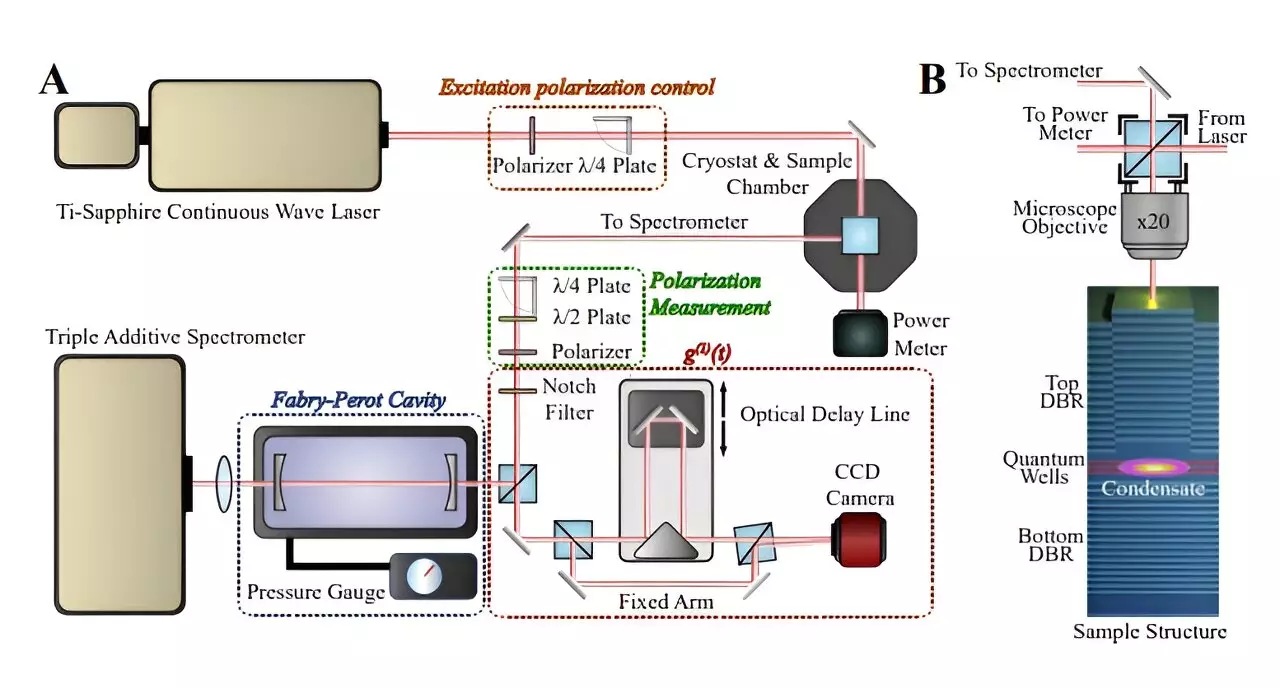In a groundbreaking study published in Science, researchers from the Paul-Drude-Institute for Solid State Electronics (PDI) in Berlin, Germany, and the Centro Atómico Bariloche and Instituto Balseiro (CAB-IB) in Argentina have observed a time crystal on a microscale semiconductor chip. This observation revealed exceptionally high non-linear dynamics in the GHz range, demonstrating a strong connection between previously disconnected areas of non-linear exciton-polariton dynamics and coherent optomechanics. The high-quality semiconductor-based sample used in the experiment acted as a trap for coherent light-matter condensates, showcasing the potential for exploring new physics at the microscale.
Theoretical Framework of Time Crystals
The concept of time crystals, initially proposed by Nobel Prize-winning physicist Frank Wilczek, has intrigued scientists for over a decade. The idea of periodic variations in time within a quantum system challenged conventional thinking and sparked a quest to observe these elusive phenomena. While time crystals were thought to be unattainable in isolated systems, recent experiments have shown that open systems, capable of exchanging energy with the environment, can exhibit time crystal behavior. The study conducted by the PDI/CAB-IB team sheds light on the internal dynamics of time crystals and their potential applications in various technological fields.
By directing a time-independent laser at the semiconductor sample, the researchers observed that the trapped particles began to oscillate at GHz frequencies, marking the first sustained oscillations in this range observed on a semiconductor device. The fine-tuning of these oscillations through the laser’s optical power demonstrated the possibility of stabilizing the frequency evolution using engineered mechanical vibrations of the semiconductor atomic lattice. Interestingly, increasing the laser power led to particles vibrating at precisely half the frequency of the mechanical vibrations, showcasing distinct manifestations of a time crystal.
Implications for Future Applications
The results of this experiment hold significant promise for the integration of time crystals in semiconductor devices for practical applications. The unique behaviors exhibited by quantum materials in the GHz frequency range open up possibilities for advancements in classical and quantum information technologies. With semiconductor-based non-linear optoelectronic systems gaining attention for on-chip photonics applications, the ability to control and manipulate time crystal dynamics presents new opportunities for harnessing their potential. By studying the interactions and synchronization of localized time crystals within arrays, researchers can pave the way for innovative photonics technologies.
Looking ahead, the research team envisions additional stages of experimentation to further explore the capabilities of time crystals in integrated and microwave photonics. The compatibility of semiconductor materials with integrated photonic devices makes them ideal candidates for photon-to-radiofrequency conversion at the quantum level, offering possibilities for novel applications in communication and information processing. Collaborative efforts between experimentalists and theorists will be crucial in advancing the understanding of time crystals and unlocking their full potential for technological advancements.
The observation of a time crystal on a semiconductor chip represents a significant milestone in the field of quantum materials research. The novel insights gained from this study not only expand our knowledge of non-linear dynamics in semiconductor devices but also offer a glimpse into the practical applications of time crystals in emerging technologies. As researchers continue to push the boundaries of quantum science, the future holds exciting prospects for leveraging time crystals for a wide range of innovative applications.


Leave a Reply